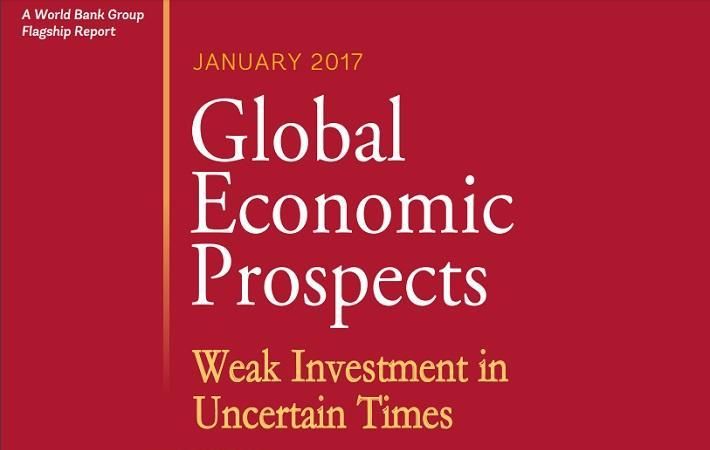Advanced economies growth to edge up 1.8%: World Bank

The global economy will grow after a post-crisis low last year as obstacles to activity recede among emerging market and developing economy commodity exporters, while domestic demand remains solid among emerging and developing commodity importers, according to the World Bank’s January 2017 Global Economic Prospects report.
“After years of disappointing global growth, we are encouraged to see stronger economic prospects on the horizon. Now is the time to take advantage of this momentum and increase investments in infrastructure and people. This is vital to accelerating the sustainable and inclusive economic growth required to end extreme poverty,” said Jim Yong Kim, Group President, World Bank.
The outlook, however, is clouded by uncertainty about policy direction in major economies. A protracted period of uncertainty could prolong the slow growth in investment that is holding back low, middle, and high income countries.
The report analyses the recent weakening of investment growth in emerging market and developing economies, which account for one-third of global GDP and about three-quarters of the world’s population and the world’s poor. Investment growth fell to 3.4 per cent in 2015 from 10 per cent on average in 2010, and likely declined another half percentage point last year.
“We can help governments offer the private sector more opportunities to invest with confidence that the new capital it produces can plug into the infrastructure of global connectivity. Without new streets, the private sector has no incentive to invest in the physical capital of new buildings. Without new work space connected to new living space, the billions of people who want to join the modern economy will lose the chance to invest in the human capital that comes from learning on the job,” said Paul Romer, chief economist, World Bank.
China is projected to continue an orderly growth slowdown to a 6.5 per cent rate. However, overall prospects for emerging market and developing economies are dampened by tepid international trade, subdued investment, and weak productivity growth. Among advanced economies, growth in the US is expected to pick up to 2.2 per cent, as manufacturing and investment growth gain traction after a weak 2016, notes the report.
“Because of the outsize role the US plays in the world economy, changes in policy direction may have global ripple effects. More expansionary US fiscal policies could lead to stronger growth in the US and abroad over the near-term, but changes to trade or other policies could offset those gains. Elevated policy uncertainty in major economies could also have adverse impacts on global growth,” said Ayhan Kose, World Bank development economics prospects director.
Regional growth in South Asia is expected to pick up modestly to 7.1 per cent in 2017 with continued support from strong growth in India. Excluding India, growth is expected to edge up to 5.5 per cent in 2017, lifted by robust private and public consumption, infrastructure investment, and a rebound in private investment.
Europe and Central Asia’s growth is projected to pick up to 2.4 per cent in 2017, driven by a recovery in commodity-exporting economies and recovery in Turkey. The forecast depends on a recovery in commodity prices and an easing of political uncertainty. Russia is expected to grow at a 1.5 per cent pace in the year, as the adjustment to low oil prices is completed.
Latin American and Caribbean region is projected to return to positive growth in 2017 and expand by 1.2 per cent. Brazil is projected to expand at a 0.5 per cent pace on easing domestic constraints. Weakening investment in Mexico, on policy uncertainty in the US, is anticipated to result in a modest deceleration of growth this year, to 1.8 per cent.
Growth in the East Asia and Pacific region is projected to ease to 6.2 per cent in 2017 as slowing growth in China is moderated by a pickup in the rest of the region. Output in China is anticipated to slow to 6.5 per cent in the year.
Middle East and North Africa are forecast to recover modestly to a 3.1 per cent pace this year, with oil importers registering the strongest gains. Sub-Saharan African growth is expected to pick up to 2.9 per cent in 2017 as the region continues to adjust to lower commodity prices. (KD)
Fibre2Fashion News Desk – India
































-Ltd..jpg?tr=w-120,h-60,c-at_max,cm-pad_resize,bg-ffffff)





.jpg?tr=w-120,h-60,c-at_max,cm-pad_resize,bg-ffffff)
.jpg?tr=w-120,h-60,c-at_max,cm-pad_resize,bg-ffffff)






